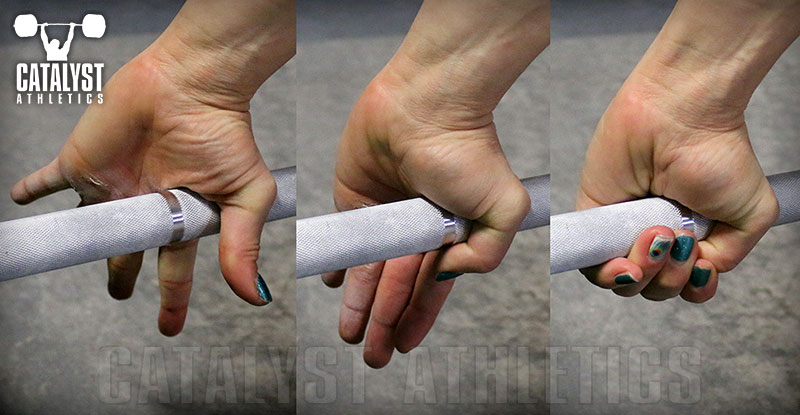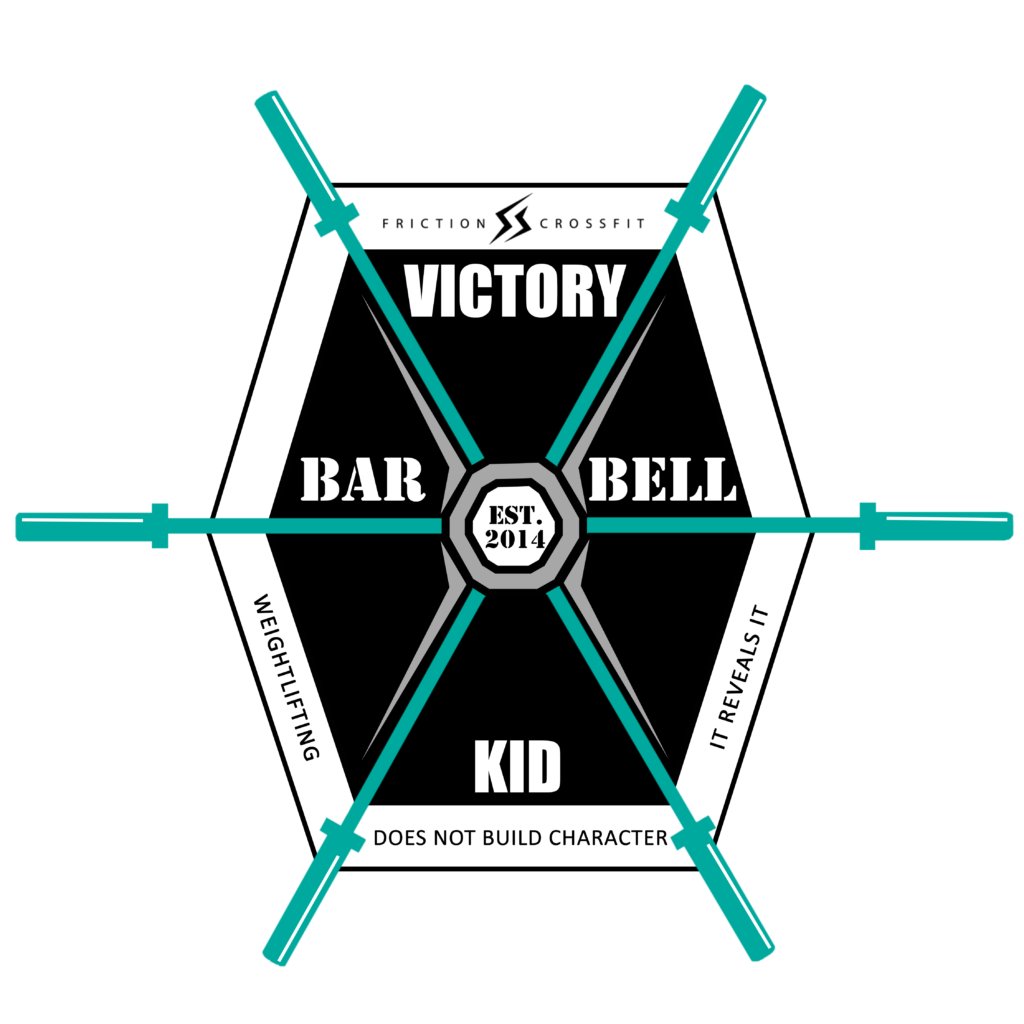In olympic weightlifting, the hook grip is crucial. If you don’t hook grip, you’re going to miss lifts.
A lot.
The hook grip will secure your hand to the barbell. Thus, making your hand a hook, and your arms more effective by not taxing your actual grip. Catalyst Athletics has a wonderful depiction of how to set up hook grip on your barbell.

In Victory Kid Barbell, we use a majority of Catalyst’s videos for coaching cues and lift progressions. This is the best picture I’ve seen of how to set up your hook grip step by step.
In all actuality, the hook grip increases the surface area of your hand on the barbell as well as securing your thumb as a “strap” on the barbell. If you’ve watched any olympic weightlifting, you might see lifters using straps for pulls and possibly, snatches. That’s what straps should be used for mainly, pulls. The only time straps should be used on the classical lift of the snatch is because of an injury or hand tears from an experienced lifter.
Key word, experienced. I wouldn’t tell a novice lifter to snatch with straps. That’s just not in their best interest, or mine, as a coach.
What benefits do you get from hook grip?
Besides rough thumb calluses, you get a stronger pull and better efficiency. Your thumb is now locked in place by your index finger and middle finger. And, your grip won’t fail you when trying to hit a heavy single or multiple reps quickly. As for the thumb calluses, athletic tape put around the entirety of the thumb will help. The tape holds chalk well and keeps your thumbs dry from sweat. It’ll also save your skin from a little bit of the barbell knurling.
Side note, only grab the thumb with your index and middle finger, mainly on the nail and before the second knuckle. If you were to flex your thumb, you’re only grabbing the thumb after the flexed joint. Grabbing the actual joint (the one that’s bent at 90 degrees), will cause thumb and wrist pain later on in lifting due to the stress of wrenching the first thumb joint over and over. Then, you can’t grip a barbell at all, nobody wants that.
There is a time and a place for not using hook grip. For instance, when a “no hook” snatch or clean is programmed. But, that progression is intentionally made more difficult by taking away the hook grip, not accidentally.
So, the next time you’re lifting in class, in club, or at home, use hook grip. Feel the difference for yourself.
See you on the platform,
Coach Mike


